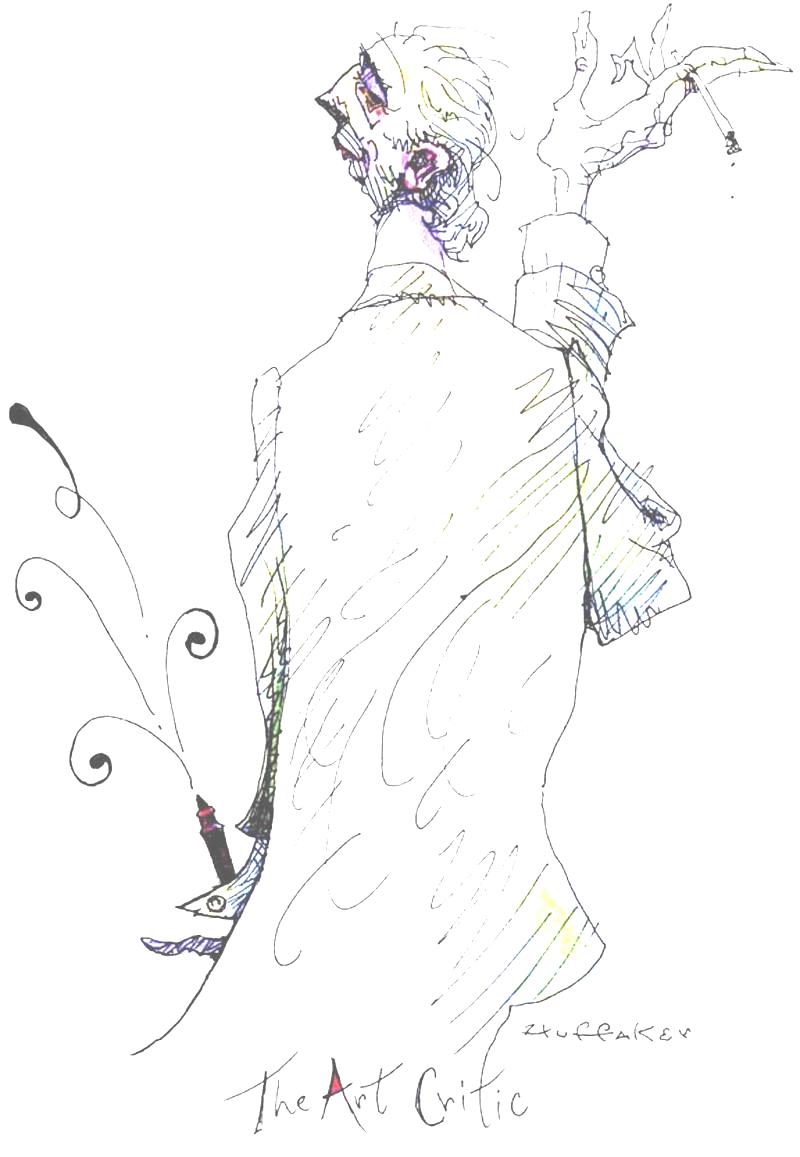
- •Introductory text
- •Comprehension questions.
- •Define whether the text statement is true (t) or false (f).
- •Vocabualary practice
- •1. Match the words and word combinations from the left column with the definitions from the right column.
- •2. Find the ‘odd one out’. There may be more than one answer. Give your reasons.
- •3. Read the text. Use the word given in brackets changing its form as in the example.
- •4. Read the sayings of famous people about art and decide which definition appeals to you most. You may choose several sayings to complete your own definition.
- •5. Read the following dialogue and discuss the after-dialogue questions.
- •1. Read the lines of a comic vaudeville ‘Romantic Fools’ by Rich Orloff.
- •2. What word or phrase is being defined?
- •Blockbusters
- •4. Study the inside structure of a theatre. Which seats are the most prestigious / convenient / cheap / expensive?
- •5. Write out music styles mentioned in the text. Think of other styles, give their definition or description.
- •6. Translate into English.
- •Read the text and do the activities that follow. American Graffiti
- •What’s the Point?
- •Answer the following questions.
- •Read the text and discuss the following.
Vocabualary practice
BLOCK I
The History of Fine Arts
1. Match the words and word combinations from the left column with the definitions from the right column.
a) surrealism |
1. genre of art and literature that makes a self-conscious break with previous genres, the period extending roughly from 1860s to 1970s |
b) cubism |
2. the name of the movement is derived from the title of a Claude Monet work, Impression, Sunrise |
c) renaissance |
3. the style of sculpture, painting, or other arts as practiced in Western Europe from the 12th to the 16th centuries; characterized by the lancet arch, the ribbed vault, and the flying buttress |
d) symbolism |
4. a movement in the arts during the early part of the 20th century that emphasized subjective expression of the artist's inner experiences |
e) rococo |
5. a cultural movement that spanned the 14th to the 17th century, beginning in Florence in the Late Middle Ages and later spreading to the rest of Europe |
f) Gothic art |
6. a late 19th-century movement in art that sought to express mystical or abstract ideas through the symbolic use of images |
g) modernism |
7. an abstract genre of art; artistic content depends on internal form rather than pictorial representation |
h) expressionism |
8. a cultural movement that began in the early 1920s presented with the works of Salvador Dalí, Man Ray, André Masson, Joan Miró, etc. |
i) abstractionism |
9. a 20th century avant-garde art movement, pioneered by Pablo Picasso and Georges Braque |
j) impressionism |
10. is an 18th century style which developed as Baroque artists gave up symmetry and became increasingly more ornate, florid, and playful |
2. Find the ‘odd one out’. There may be more than one answer. Give your reasons.
1. a classic a masterpiece a work of art
2. a loan a grant a subsidy
3. opera ballet theatre
4. modelling sculpture painting
5. to appeal to interest to appreciate
6. to stage to screen to put on
7. galleries museums studios
3. Read the text. Use the word given in brackets changing its form as in the example.
Artistic and cultural life in Britain is rather rich. It passed several main stages in its development (develop).
London is one of the leading world centers for art. Many British painters are known all over the world. Among them is Joseph Turner, the greatest English _________ (romance) landscape painter. He was the son of a barber. He started drawing and _________ (paint) as a small boy. At the age of 14 he entered the Royal Academy School. His water-colours were ________ (exhibition) from the time he was fifteen. At 18 he had set up his own studio. Turner worked at first in water-colours, then in oils. He was the master of the air and wind, rain and sunshine, ships and sea. He dissolved the forms of his landscape in the play of light and shade. He anticipated the work of French Impressionism. Turner’s ‘The Shipwreck’, ‘Burning of the Houses of Parliament’ and ‘Snow Storm’ are masterpieces of the great artist.
Another _________ (fame) English painter is Joshua Reynolds. He was the first President of the Royal Academy of Arts and the _________ (found) of the academic principles of the ‘British school’. Reynolds was the most outstanding _________ (portrait) of the 18th century. In his pictures he didn’t only paint portraits but produced characters. ‘The Little Heracles Defeating Snakes’ is his famous masterpiece.
 The
National Gallery of Art exhibits works of all the European schools of
________ (paint). Here is the best _________ (collect) of the
European and English masterpieces.
The
National Gallery of Art exhibits works of all the European schools of
________ (paint). Here is the best _________ (collect) of the
European and English masterpieces.
